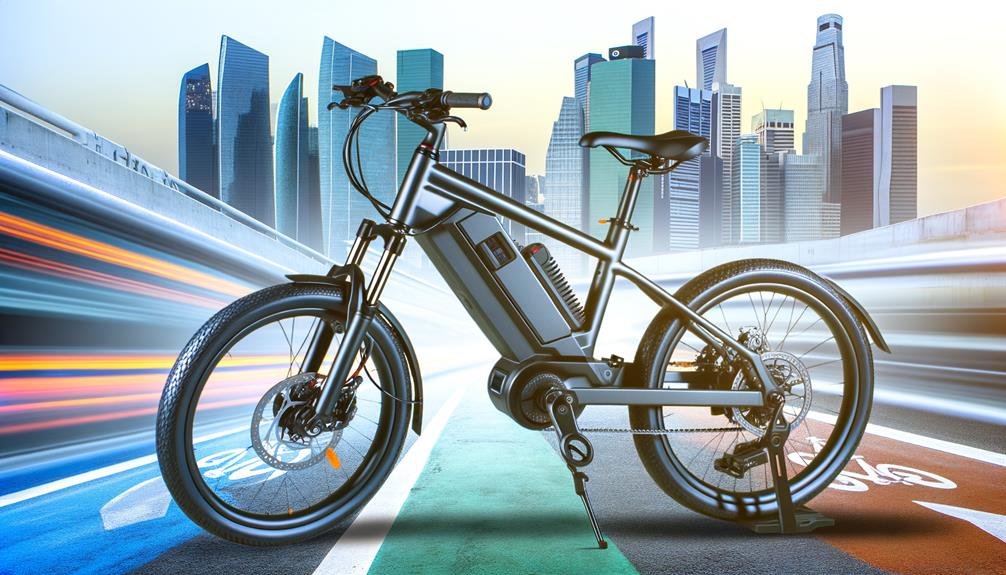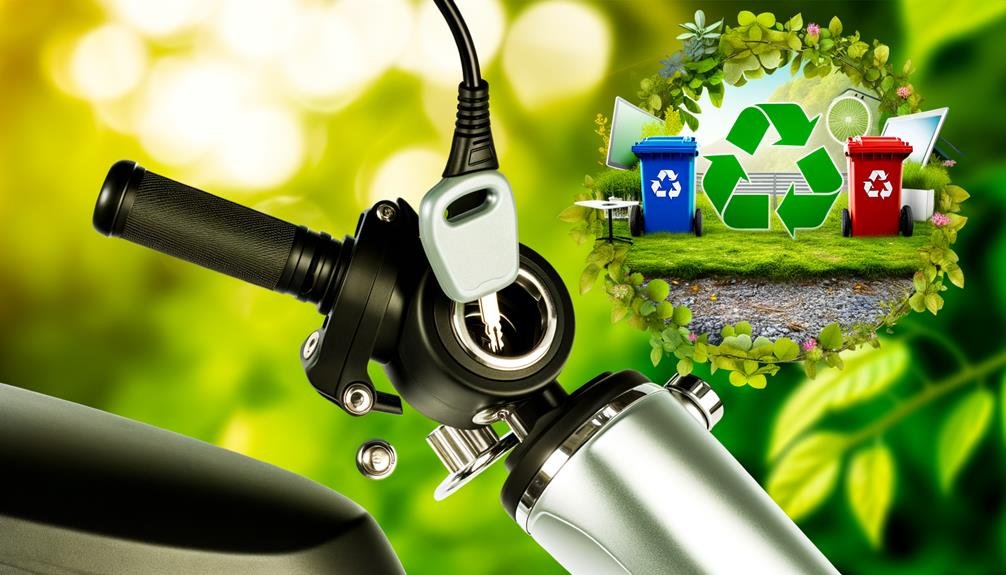Charles Miller is a veteran bike enthusiast with over 12 years of experience dealing with bikes as a mechanic. Despite immense love and expertise for...
Imagine, if you will, harnessing the power of a Roman chariot to fuel your modern-day electric bike. You're riding along, not worrying about draining the battery, as the bike is constantly recharging itself.
Now, this might seem like a dream, but it's something you can actually achieve. By integrating regenerative braking technology and a well-designed generator system, you can transform your ordinary electric bike into a self-charging marvel.
Exciting, isn't it? But how, you might ask, does one go about creating such a machine? Stay with us as we explore the intricacies of this fascinating project.
Key Takeaways
- Electric bikes with self-charging technology harness energy generated while cycling, reducing reliance on non-renewable energy sources.
- Self-charging bikes offer an environmentally friendly mode of transportation, promoting sustainable living and the use of renewable energy.
- These bikes are cost-effective and low maintenance, reducing the need for frequent battery charges or replacements.
- Self-charging bikes enhance range and convenience for longer rides, making them ideal for urban commuting and promoting physical activity with pedal-assist modes.
Understanding Electric Bike Basics
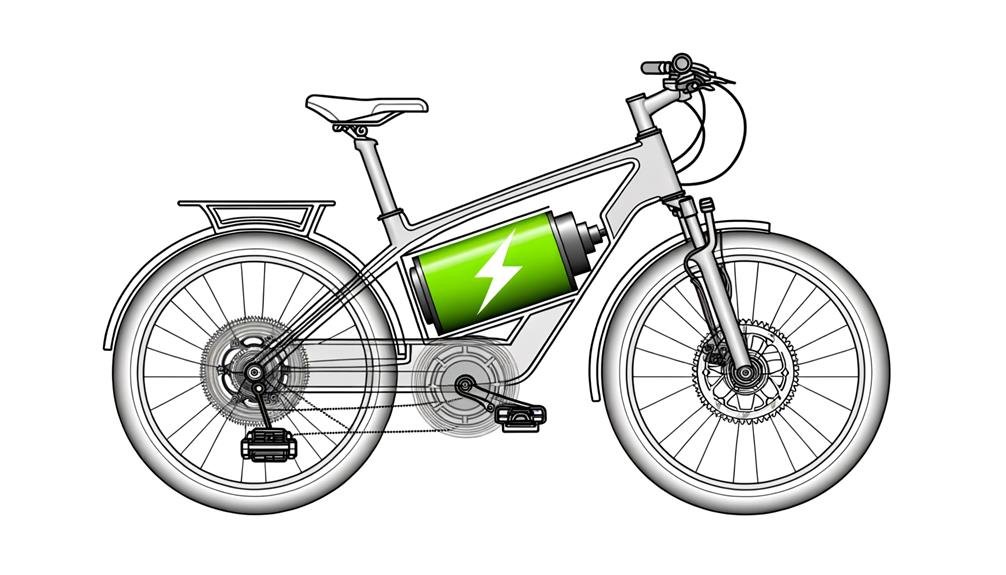
Diving into the basics, you'll find that an electric bike, often called an e-bike, is essentially a bicycle integrated with an electric motor which can be utilized for propulsion. This fusion of mechanics and technology provides a unique cycling experience that blends physical effort with electric power.
At the heart of your e-bike is the number one component: the battery. It's the powerhouse that fuels the motor, propelling you forward with less effort. Typically, e-bike batteries are rechargeable lithium-ion, known for their long life and consistent performance.
Now, let's delve into the concept of how to charge the battery. The process is as simple as plugging it into a standard wall outlet. However, the speed at which the battery charges depends on its capacity and the power of the charger. A higher capacity battery will take longer to charge.
Here's where it gets interesting. Imagine a self-charging e-bike, a bike that charges its own battery as you ride. It's a concept currently in development but holds immense potential for revolutionizing e-bike technology. By harnessing the energy generated while cycling, you'll never have to worry about running out of juice mid-ride again.
Benefits of Self-Charging Bikes
You'll find a self-charging bike's benefits are manifold.
Notably, they offer an environmentally friendly mode of transportation, reducing reliance on external, often non-renewable, power sources.
Furthermore, self-charging bikes are cost-effective and low maintenance, curbing frequent battery charges or replacements, and enhancing range and convenience for longer rides.
Eco-Friendly Transportation Option
Opting for a self-charging electric bike as your mode of transportation not only slashes your carbon footprint but also propels the use of sustainable energy, making it a truly eco-friendly choice.
You'll be part of a community that values sustainable living while enjoying the practical benefits of these bikes. Here's what you can expect:
- You'll save on fuel costs as the battery recharges while you pedal, reducing your reliance on non-renewable energy sources.
- The bike promotes physical activity with pedal-assist modes.
- It's the perfect vehicle for urban commuting, offering a smooth, quiet ride with minimal parking and traffic issues.
Cutting Down Fuel Costs
By choosing a self-charging electric bike, you're not just opting for an eco-friendly mode of transportation, but also taking a significant step towards reducing your fuel costs.
The recharging efficiency of these bikes is exceptional, saving on electricity costs as the need for frequent battery recharges is drastically reduced or even eliminated. This is achieved through regenerative charging technology, a marvel in energy conservation, which harnesses energy while you're riding.
This reduces reliance on external power sources and lowers overall energy expenses. Moreover, less frequent traditional charging reduces wear and tear on the battery, offering cost effective solutions by potentially extending its lifespan.
Embrace this innovation and join the community redefining transportation while being mindful of environment and wallet.
Necessary Tools and Materials
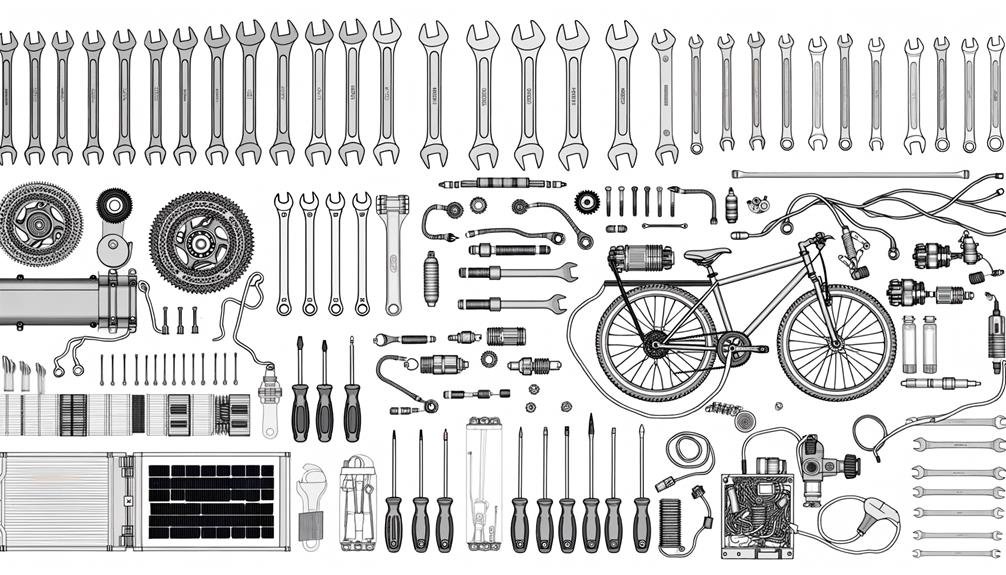
To build your self-charging electric bike, you'll need specific tools and materials.
Start by identifying the essential bike components, such as a suitable lithium-ion battery pack, a compatible electric motor, and a regenerative braking system.
Then, select your tools and gather the required materials, including wiring, connectors, and mounting hardware.
Essential Bike Components
In your quest to build a self-charging electric bike, understanding the essential components and the necessary tools is the cornerstone of the project. You need to comprehend the motor power, select a battery with adequate capacity, and choose suitable tires to ensure optimal performance.
- Understanding Motor Power: An efficient electric motor is critical for speed and terrain adaptability. Opt for one with the right power output.
- Choosing the Right Battery: A high-quality lithium-ion battery with suitable voltage and amp-hour capacity ensures desirable range and longevity.
- Selecting Suitable Tires: Based on your riding conditions—road, off-road, or mixed terrain—selecting the right tires enhances bike stability and ride smoothness.
Selecting Your Tools
Before diving into the assembly, it's crucial that you've got all your necessary tools and materials at hand. This includes not only basic tools like wrenches and screwdrivers but also equipment for understanding battery technology such as a digital multimeter. These tools will help you leverage the advantages of regenerative braking, a key feature in self-charging e-bikes.
Here's a quick summary table of tools you'll need:
| Basic Tools | Specialized Tools | Maintenance Supplies |
|---|---|---|
| Wrenches, Screwdrivers | Wire Strippers, Crimping Tools | Lubricants, Cleaning Materials |
| Tire Levers, Bike Pump | Soldering Equipment | Spare Parts |
Gathering Required Materials
Having assembled your toolbox, it's time now to gather the necessary materials for your self-charging electric bike project. You'll need to research and purchase an electric bike conversion kit that suits your specific bike model. This will typically include a motor, controller, throttle, and sensor kit.
Your selection of necessary materials should include:
- Various generator types, each offering unique benefits. Your choice depends on your bike's power requirements.
- A lithium-ion battery pack and charger. Battery selection is crucial for ensuring your bike's power efficiency and longevity.
- Wiring techniques are essential to understand. You'll need appropriate wiring, connectors, and tools for a successful conversion.
Building the Generator System
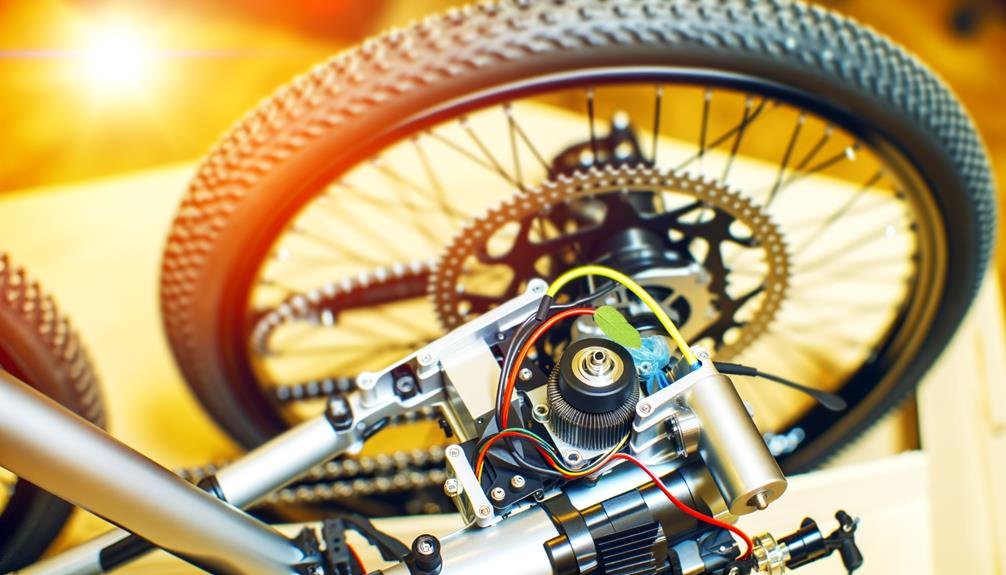
To construct the generator system, you'll first need to select a high-efficiency generator that can seamlessly fit into the bike's frame. This is a crucial step in the process of building your self-charging bike, as it is the heart of your power generation system.
When installing the generator, ensure it is connected to the wheel to efficiently capture kinetic energy during riding. This is an important part of optimizing power output. Next, install a voltage regulator to control this output and protect the battery from overcharging.
| Generator | Voltage Regulator | Maintenance |
|---|---|---|
| High-efficiency | Controls power output | Regular checks |
| Connects to wheel | Prevents overcharging | Lubrication |
| Captures kinetic energy | Integrated into system | Replace worn parts |
| Optimizes power output | Ensures safety | Regular updates |
Maintenance and upkeep are vital for the longevity of your bike. Regular checks, lubrication, replacing worn parts, and updates are all part of this process. Finally, test the system thoroughly. This ensures it effectively captures and stores energy while maintaining the bike's performance. By building and maintaining your generator system correctly, you'll belong to the growing community of self-sufficient bikers.
Installing the Regenerative Braking
Moving on to the next step, you'll need to install the regenerative braking system, a pivotal component that allows your bike to recover and reuse energy typically lost during braking. This is a crucial part of the bike's energy storage, as it contributes significantly to brake efficiency and overall power sustainability.
To make the most of regenerative mechanics, you'll need to follow a few key steps:
- First, purchase a regenerative braking kit compatible with your electric bike's build. These are widely available on the market.
- Next, install the kit following the manufacturer's instructions, ensuring that it integrates seamlessly with your bike's existing brake system.
- Finally, test the system thoroughly, adjusting as necessary to maximize brake efficiency and energy recuperation.
The regenerative braking system harnesses kinetic energy during deceleration and converts it into electrical energy. This energy is then stored in the battery for later use, reducing the need for frequent recharging and extending your bike's range.
To belong in the community of self-sustaining electric bike enthusiasts, mastering the installation of the regenerative braking system is a must. It's an innovative, eco-friendly way to make the most of your electric bike's potential.
Connecting the System to Your Bike
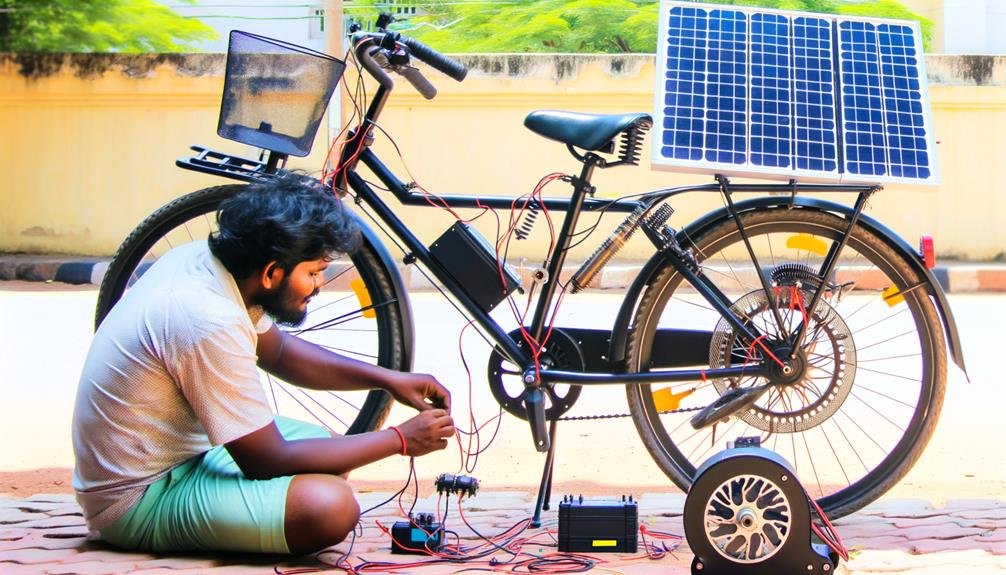
Now, let's dive into the intricate process of connecting the regenerative braking system to your bike's existing setup. This critical bike customization step requires careful attention and precision.
Firstly, identify the bike's current braking system. Depending on whether it's mechanical or hydraulic, the regenerative braking system will integrate differently. For a mechanical system, you'll connect the brake lever to the brake sensor. In contrast, for a hydraulic system, you'll need a brake light switch.
Safety measures are paramount during this process. Always disconnect the bike's power source before starting. Use insulated tools to reduce the risk of electric shocks. Also, ensure your workspace is clean and well-lit.
After successfully connecting the braking system, test it to ensure proper functioning. If the bike slows down when you engage the brakes, the installation is successful.
Now, onto some maintenance tips. Regularly check the wiring for any signs of wear or damage. Replace any frayed or loose wires immediately. Keep a close eye on the brake sensor too, as it's integral to the regenerative braking system.
Testing and Troubleshooting Your Bike
Having established a sound connection with the regenerative braking system, it's crucial you understand how to effectively test your bike and troubleshoot any potential issues that might crop up.
First, perform brake calibration. Test your bike's regenerative braking system in a safe, controlled environment. Apply the brakes at various speeds and pay attention to any inconsistencies in the braking power. Adjust the brake tension as necessary to balance the energy regeneration and stopping power.
Secondly, take care of battery maintenance. Regularly check your battery's health by monitoring the charge levels and how long it retains the charge. Keep it clean and dry to prevent any potential damage.
Lastly, focus on performance optimization. This involves ensuring the efficient operation of all components, such as the motor, gears, and tires. Regularly inspect these parts for wear and tear, replacing them as necessary to maintain optimal performance.
To summarize, remember these key points:
- Brake calibration is essential for safe and efficient energy regeneration.
- Regular battery maintenance ensures longevity and consistent performance.
- Performance optimization keeps your bike running smoothly and efficiently.
Frequently Asked Questions
Is There an Electric Bike That Charges Itself?
Yes, there is. With innovative technologies enhancing pedaling efficiency, bikes like the Anyway Engine Pro e-bike provide sustainable commuting by charging themselves. It's a way to feel connected to a future-focused, eco-conscious community.
How Can I Charge My Electric Bike Without a Charger?
You can charge your e-bike without a charger by utilizing pedal power and regenerative braking. Additionally, attaching solar panels can provide a steady flow of energy. This process requires technical understanding and careful implementation.
What Is the Methodology of Self Charging Electric Bikes?
You're exploring bike efficiency and power generation. Innovative methods, like regenerative braking, convert your cycling effort into energy, recharging your electric bike's battery during rides, making it self-sufficient and eco-friendly.
Is It Cheaper to Build Your Own Ebike Battery?
Yes, it's generally cheaper to build your own ebike battery. Battery sourcing and assembly can save you money. However, consider the DIY challenges and conduct a cost analysis, as it requires technical skills and knowledge.
Conclusion
So, you've mastered the basics, understood the benefits, and gathered your tools.
You've built your generator system, installed regenerative braking, and connected it all to your bike.
After some testing and troubleshooting, you're ready to ride.
Now you're not just pedaling – you're generating power, charging your battery, and embracing sustainability.
Congratulations on creating your self-charging electric bike.
Keep pushing those pedals and pushing innovation.
The road ahead is full of potential!

Charles Miller is a veteran bike enthusiast with over 12 years of experience dealing with bikes as a mechanic. Despite immense love and expertise for his Tacoma, he rides his Trek Ebike more. Anytime you meet him, you’ll either hear him talking about Bikes, or writing about all things bikes and cars on this blog.
More Posts

